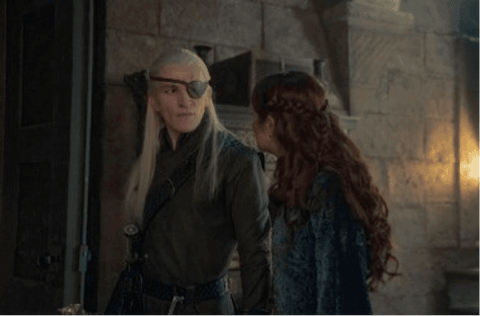‘House of the Dragon’ Season 2: 5,400 costumes, crew of nearly 2,500 and over 100 new sets in the Epic Production

‘House of the Dragon,’ the prequel to Game of Thrones, is based on George R.R. Martin’s bestseller Fire & Blood. Season 1 ended with Aegon (Tom Glynn-Carney) being crowned King, much to the fury of Rhaenyra, the firstborn of the late King Viserys and his named successor.
Ryan Condal, the showrunner and co-creator of HBO’s ‘House of the Dragon’ — which recently concluded its second season and is now available for binge-watching on Showmax — has described the production process as “an ultra-marathon.”
Filmed across England, Wales, and Spain, Season 2 required an astounding 5,400 costumes, supported by a crew of nearly 2,500 people. Over 100 new sets were constructed across five sound stages and a backlot during a gruelling five-and-a-half-month shoot.
“Every day is essentially two days worth of film days,” said Condal. “For example, you plan your schedule so that Emma D’Arcy as Rhaenyra can be shooting scenes at Dragonstone with one director and another director is shooting scenes with Olivia Cooke playing Alicent in the Red Keep across the lot. And that’s how we break up the schedule and ensure it doesn’t take a year and a half to film one season.”
Tensions were already high before the murder of Rhaenyra’s son, Lucerys, at the hands of Aegon’s brother, Prince Aemond (Ewan Mitchell), in the Season 1 finale. Season 2 picks up with both sides bracing for the inevitable fallout. With Aegon now on the throne, the children of Alicent and Rhaenyra take on more central roles this season.
Condal explained that the themes introduced in S1 are intensified in S2. “This season it becomes very much about how far you are willing to go to win the throne, particularly in an environment, which was not the case in Game of Thrones, where you essentially have nuclear weapons on the table and the threat of mutually assured destruction, which is, of course, what the dragons are.”
On the technological front, Condal noted that the dragon flight scenes in Season 2 are more refined than those in Season 1, thanks to advancements in the ‘buck’—a 2000kg motion base that simulates dragon flight. The buck, which actors sit on, is programmed to replicate the dragon’s movements as laid out in the storyboards. A robot-armed camera moves in sync with the buck, creating a more realistic, documentary-like experience. The special effects team has also added new features, such as programmed wing flaps and enhanced articulation, making the dragon’s movements feel more organic and lifelike.
Condal was understandably relieved when he wrapped Season 2. “Every season is a battle,” he said. “It always feels good to finish and this one in particular feels good because Season 2 is so much bigger in scope and ambition. So even though it was eight episodes versus ten in S1, it somehow felt like a bigger accomplishment in the end. You learn an awful lot when you make S1 of a show and, if you’re lucky enough to make it to S2, you get to do it again, but better.”
